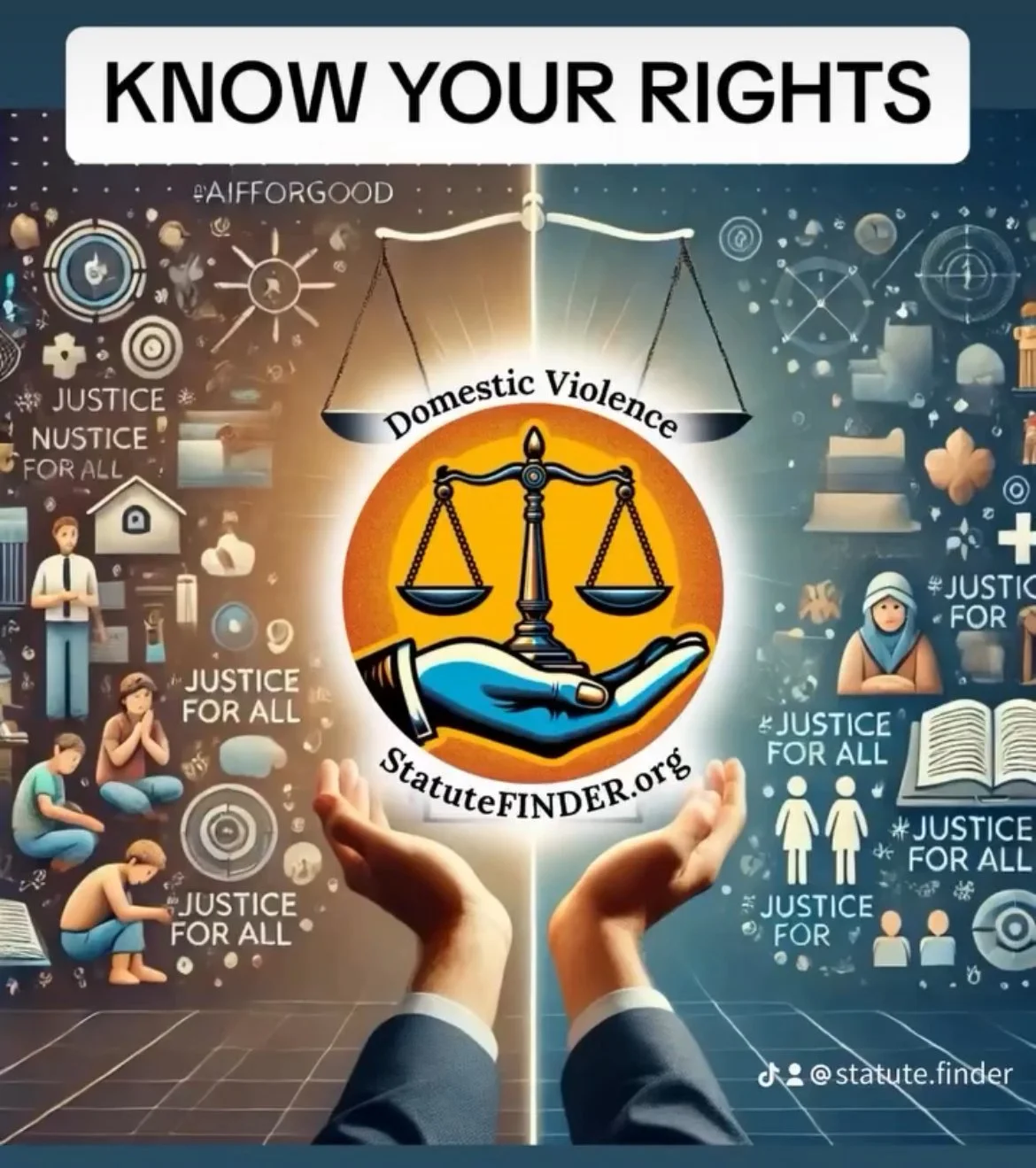What is Restorative Justice in Domestic Violence? And How Can StatuteFINDER Help?
Restorative justice heavily focuses on offenders' healing, reconnecting with the community, and accountability. In this blog, you will learn how it works and how StatuteFINDER can help you.
As of September 28, 2025.
Introduction
When a domestic violence offender breaks the law, the legal system punishes wrongdoers with time behind bars, fines, or probation. Even so, there are better approaches to keep offenders from reoffending. Let’s ask ourselves,” How can we reduce the likelihood of domestic violence offenders recommitting crimes?” That is when restorative justice comes into play. An alternative to punishment, restorative justice is how we can reintegrate inmates and domestic violence abusers from prison back into society.
But does this process actually work? And how can people access it?
What Is Restorative Justice?
Restorative justice is a method of rehabilitation that prioritizes repairing the negative behaviors of wrongdoers. The goal of restorative justice is to identify the underlying problem and gradually fix the damage. Domestic violence abusers going through rehabilitation are able to heal strained relationships with relatives or friends, repair their relationship with their community, and gain accountability for their actions. This approach can take many forms:
Community circles
Mediation sessions
Meetings between the victim and the offender
Rehabilitation is popular among juvenile justice systems and high schools because it focuses on the underlying issue and does not rely heavily on harsh punishments to discipline them.
Why Does it Matter?
Traditional punishment is usually not very effective and can be counterproductive. It often leaves the juveniles at a higher risk of committing more crimes once they are released. This is because juveniles who are incarcerated are exposed to abuse and a lack of programs to help them, which disrupts the possibility of success in their future. However, restorative justice flips the script by:
Teaching wrongdoers why, and what they did was wrong, so they can take accountability for their actions
Enrolling them in group therapy/ education programs
Help offenders rebuild a stronger connection with their community
It is proven that restorative justice can decrease re-offending in inmates by improving satisfaction for both victims and offenders and promoting long-term healing.
How StatuteFINDER Can Help:
Co-parenting with an abusive partner can keep the cycle going. Restorative justice may offer a long-term path toward safety and accountability. StatuteFINDER helps survivors understand the process, the safeguards, and where to start.
StatuteFINDER is a free app designed to help you find relevant laws based on your situation. Whether you’re involved in a school conflict, a juvenile case, oe co-parenting with an abusive partner, StatuteFINDER can:
Show whether restorative justice is supported in your area
Help you find alternatives to traditional punishment
Guide you to state or school policies that allow for mediation or restorative practices
Offer tools necessary to help you stand up for your rights and ask for a restorative approach
Picture this: you’ve been suspended from school for a fight with your classmate, but instead of being reprimanded, you and the other student could talk it out, understand each other, and find a resolution. StatuteFINDER helps you know how to ask for help and how to approach the situation from a legal standpoint.
Final Thoughts: Does Restorative Justice Work?
Restorative justice offers something that traditional systems often lack:
Empathy
Understanding
The chance to truly make things right
That said, restorative justice is the better approach for juveniles. Restorative justice can benefit the lives of juveniles, instead of taking punitive measures to instill a lesson in them. Remember, punishment does more harm than good. Restorative justice may not be the quickest fix, but with time and effort, juveniles will be able to have a second chance at a crime-free life.
Additionally, with tools like StatuteFINDER, it can effectively teach you how users can gain access to healing-based therapy solutions.
How to Use StatuteFINDER
If you want to learn more about StatuteFINDER or how to use the StatuteFINDER app, click the video below:
Guest Author: Brenda Gallello
Brenda Gallello is a passionate law student pursuing her passion in criminal and civil law. She actively participates in debates, volunteers in a political campaign, and aspires to learn more about criminology and psychology.
Works Cited
“Restorative Justice: Prioritizing Victims’ Needs.” Human Trafficking Awareness, 5 Mar. 2025, nhfinternational.org/restorative-justice-victims-needs/?gad_source=1&gad_campaignid=22289232682&gbraid=0AAAAA9WaHNuQO2QoOal_kD9JNHZkAV5w6&gclid=CjwKCAjw4efDBhATEiwAaDBpbrNAtmFlJo-8QFw3dG4uwpB2YusnNcJ68b9sssF7uZfJeL2Dk3DOuxoCg4gQAvD_BwE. Accessed 22 May 2025.
Restorative Justice Council. “What Is Restorative Justice? | Restorative Justice Council.” Restorativejustice.org.uk, Restorative Justice Council, 2016, restorativejustice.org.uk/what-restorative-justice. Accessed 21 May 2025.
Zehr, Howard. “About Restorative Justice | University of Wisconsin Law School.” Law.wisc.edu, 2002, law.wisc.edu/fjr/rjp/justice.html. Accessed 22 May 2025.



